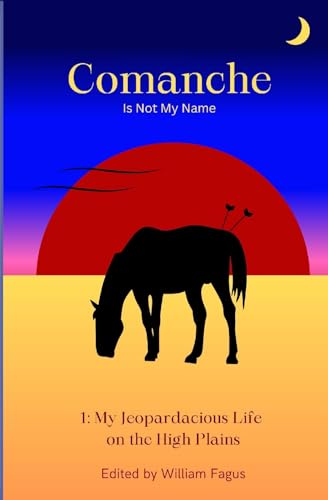Comanche Is Not My Name
Novels with animal narrators present numerous problems, not least of which is the need to use human language to convey the creature’s story. I was intrigued, therefore, that William Fagus has chosen a horse for his narrative point of view. It proved to be a fascinating and very successful choice.
The novel is set in America of the 1860s and follows the adventures of our equine hero from his wild birth on the Great Plains, to his capture by a Comanche tribe and his subsequent encounter with the ‘taibo’ (the white men) – gold diggers, settlers and the US cavalry. The narrative suspense builds towards the Battle of the Little Bighorn (our narrator repeatedly claims he is the last living survivor of that battle).
There are evocative descriptions of the American scenery: the vast, arid plains of the llano, the grasslands of the prairies and the colder, less hospitable northern landscape. Details about the Comanche lifestyle are absolutely fascinating and meticulously researched. The viewpoint is neither partisan nor critical. Our narrator just largely observes and comments, often hilariously, although there is a sense of the author’s perspective too. But it is also undeniably brutal at times: details of Indian raids, battles and hunting forays are unflinchingly depicted. There are rugged descriptions of the harsh trials of the early settlers and the lifestyle for man and horse in the US Cavalry. The range of characters we encounter is sympathetic, villainous and comic by turn.
The first-person narrative voice is well realised: a comic mix of Texan inflections, colloquialisms, Comanche words and elevated vocabulary. How this glorious linguistic hotchpotch emanates from the thoughts of a horse is never fully explained but ultimately doesn’t matter – we should simply give ourselves up to a colourful, original and totally enjoyable ride.










